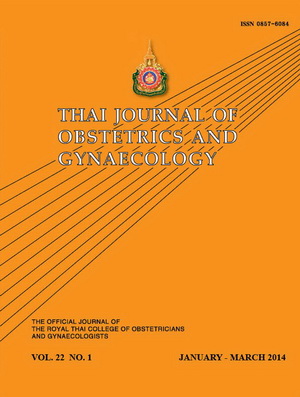Menstrual Patterns among Upper Secondary School Students, Khon Kaen, Thailand
Main Article Content
Abstract
Objectives: To determine the prevalence of abnormal menstrual bleeding and effects of menstrual bleeding on academic and daily life among upper secondary students in Khon Kaen, Thailand.
Materials and Methods: 339 Secondary school students were randomly selected and asked to complete an anonymous questionnaire. The questionnaire included data on demographics, menstrual patterns, impact of menstruation on academics and daily life and any related menstrual symptoms.
Results: We surveyed 339 students between 15 and 19 years of age. Mean age of menarche was 12.3±1.1. Majority of students (75%) had regular menstrual cycles while 25% had irregular menstrual cycles. Four patterns of menstrual irregularity predominated: metrorrhagia, polymenorrhea, menorrhagia or hypermenorrhea and oligomenorrhea (37.6 %, 35.3%, 17.7% and 9.4%, respectively). Menstrual irregularity affected activity such as poor studying concentration (48.2%) and limit sport activities (42.3%). False negative perception of abnormal menstruation was 17.9%. The two most common sources of consultation were mothers (90.5%) and internet and social media (22.7%).
Conclusion: Abnormal menstrual bleeding is common in menstrual disorders. Metrorrhagia and polymenorrhea are also high prevalence. Academic and daily life activities are affected by menstrual irregularity. Consequently, health promotion programs in secondary school should be provided for improving their menstrual health.

